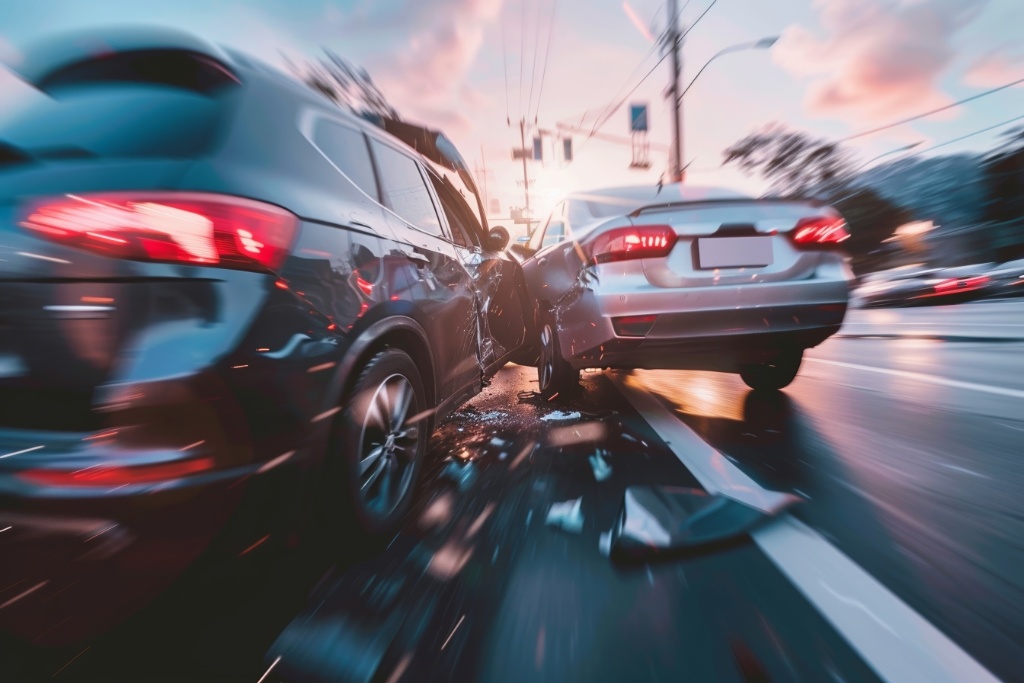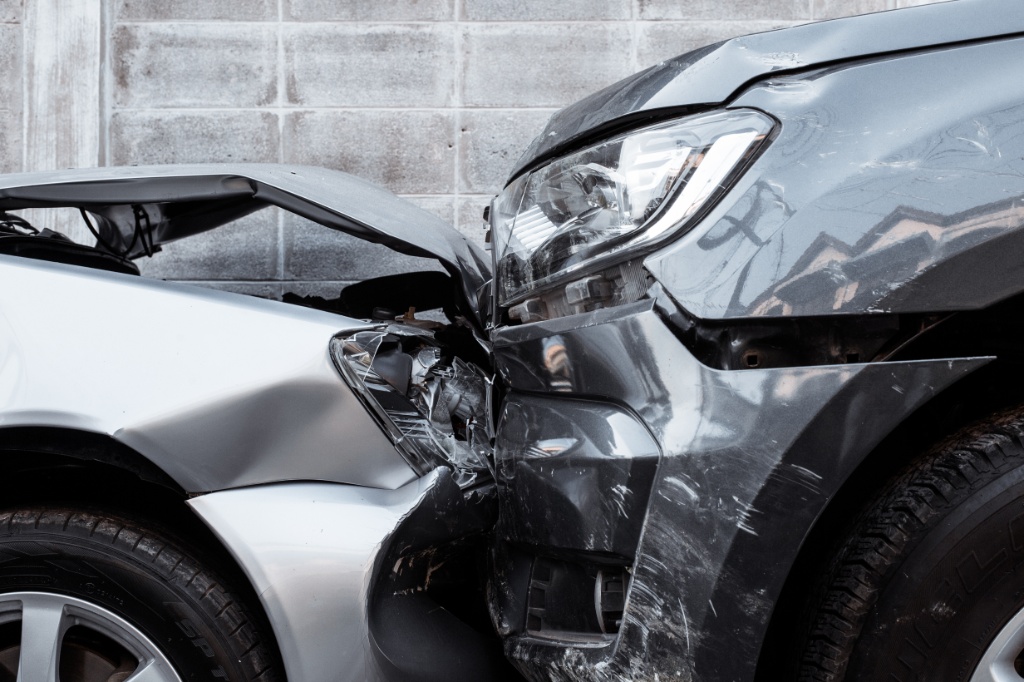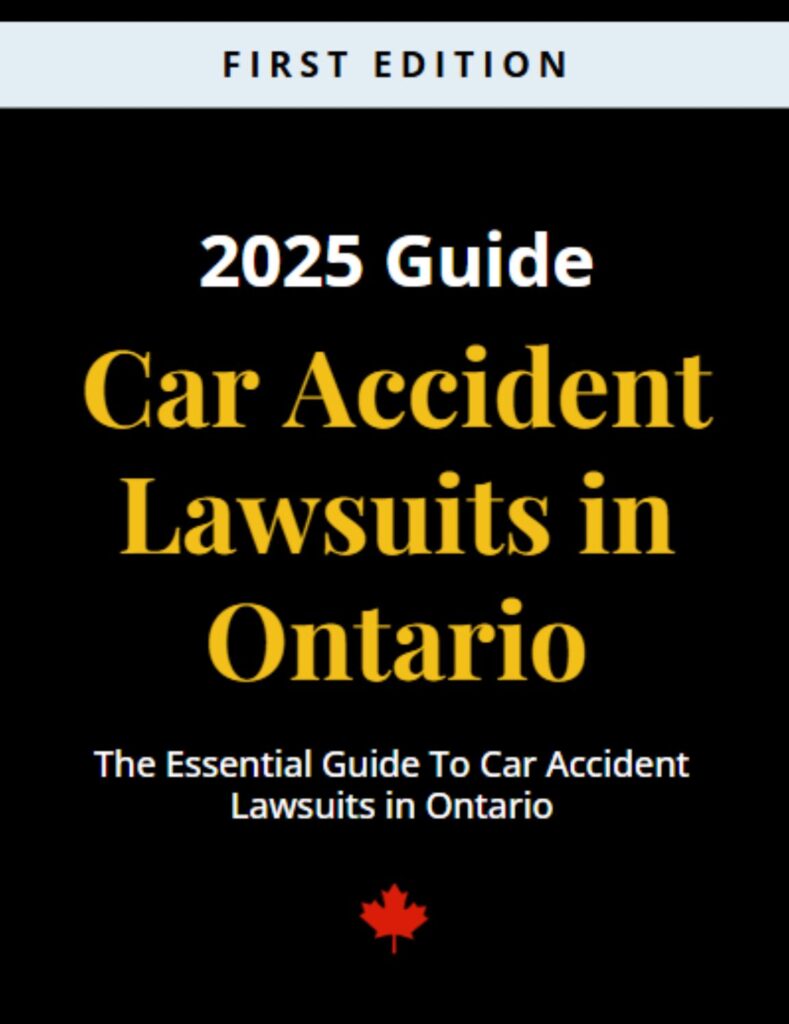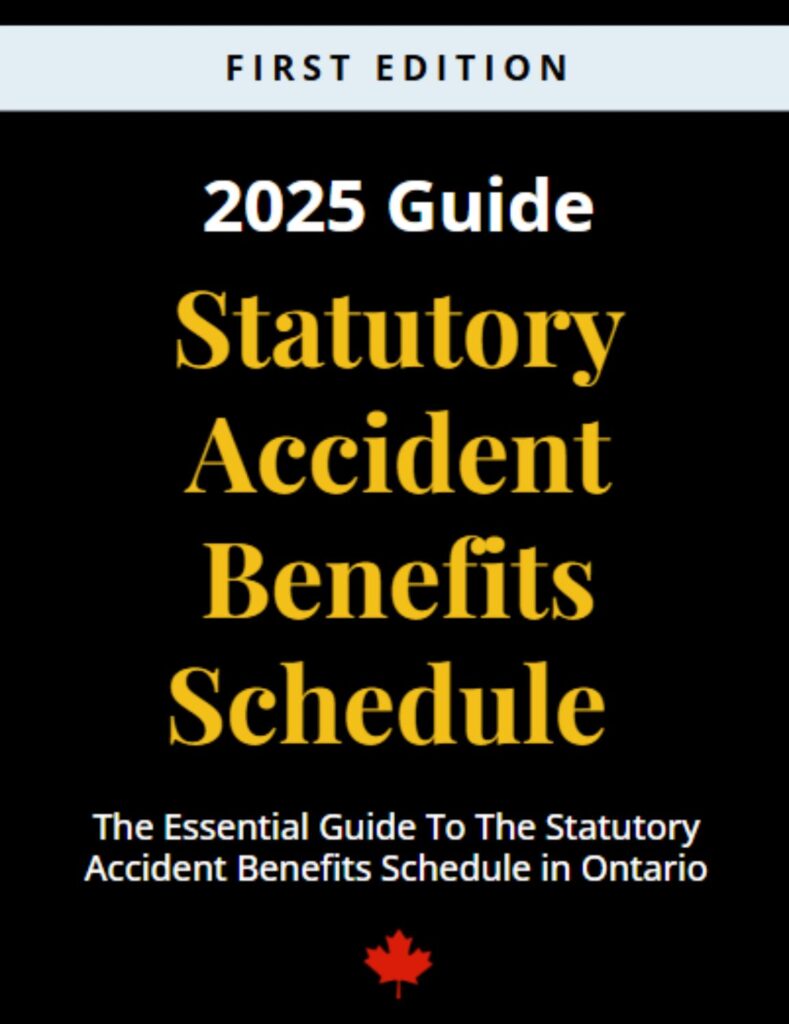Ajax Driver Negligence Lawyer
Find out if you have a case today.
Contact our Ajax car accident lawyers for a free consultation if you have legal questions regarding your car accident claim.
Table of Contents
Ontario and Ajax have a generous system of no-fault (statutory) benefits that will provide insurance coverage for, depending on the severity of injuries, medical expenses, rehabilitation, in-home care, and lost wages if you were injured in an accident. These benefits are available to you even if you were at fault for an accident, and even if you were the only car involved in the accident.
However, sometimes an accident is caused by the carelessness of another driver. In these cases, you may have the right to take the other driver to court in order to obtain damages that go beyond what the no-fault accident benefits insurance will provide. In order to get these damages, you will first have to show negligence on the part of another driver.
There are two ways to recover from a driver who was negligent: through insurance claims or through a lawsuit. Showing negligence on behalf of another driver works a bit differently for each.
Insurance Claims
With insurance claims, there are laws that detail the factual scenarios of an accident, which give insurance companies guidance about when their insured driver is or is not negligent. For example, the Ontario Insurance Act and its regulations and the Highway Traffic Act state that when a car is stationary or moving, any car that hits it from behind is liable for the accident. If a car enters a roadway through an access road and collides with an oncoming vehicle that is already in the roadway, the car that was trying to enter the roadway is the vehicle at fault.
The Fault Determination regulation contains numerous diagrams and hypotheticals for as many as 40 different kinds of car accidents, explaining who is liable for each type of accident. Although this is not determinative of liability in a tort claim, it provides a sound rationale in support of liability against the at-fault party.
LET US PUT OUR EXPERTISE TO WORK FOR YOU
Tell Us What Happened
Since 1959, we’ve helped thousands of Canadians get the compensation they deserve with their car accident claims. One of Canada’s oldest personal injury law firms, personal injury law is exclusively what we do. Book a free consultation today with our top-rated personal injury lawyers.
Our team is available 24/7 to speak with you.

Suing Negligent Drivers
Filing a lawsuit against the negligent driver is another way to obtain compensation. In court, the fault determination rules are hypothetical and do not apply. Instead, the laws of negligence will determine who is responsible for causing an accident.
Negligence is the failure of someone to act the way a reasonable person in the same situation would act. Negligence is an objective standard that measures someone’s behaviour in a certain situation against how others would behave in a similar situation. Drivers who do not use reasonable care when driving and who cause an accident can be held liable for negligence.
Sometimes, negligence is obvious. Some examples where a driver may have obviously failed to use due care might include:
- Driving while intoxicated
- Causing an accident while exceeding the speed limit
- Driving while “distracted” (texting, or fiddling with in-car information systems)
- Driving when drowsy
- Driving with defective vehicle parts, such as non-working brakes or lights
In other cases, determining who is at fault may not be so clear. Both drivers may claim that they had the green light, the right of way, or both drivers may claim that the other driver drove past a stop sign. In lane change accidents, both drivers may claim that the other entered their lane. Some roadways may not have traffic signals or markings indicating the right-of-way at all.
Negligence can even depend on the circumstances. For example, driving in a certain manner may be fine normally, but in snow, rain, or inclement weather, driving that same way can be negligent.
Proving Negligence
Proving negligence takes evidence, and evidence is especially crucial in accidents where it is not immediately clear who negligently caused the accident. The testimony of eyewitnesses and the findings of experts are critical. An Ajax lawyer who knows how to find negligence on behalf of another driver can help corroborate your version of events using other evidence.
Sometimes, clues as to who is negligent are physically present at the accident scene. For example, skid marks in the roadway, the position of the cars immediately after the accident, or the location and extent of damage to the vehicles all can help an accident reconstruction expert piece together how an accident happened.
Often, data from any electronic device can be used to prove negligence on behalf of another driver. For example, cell phone records may show that a driver was talking or texting when an accident occurred. Many vehicles track the car’s systems, the way a plane’s “black box” does. This information can reveal how fast a car was going, what direction it was traveling, or when the brakes were applied.
Pictures that are taken at the scene of the accident can be crucial evidence in determining negligence by another motor vehicle driver.
Insurance Company Defenses
All of this information will help your lawyer present the facts of your case to an insurance company or to a court if you need to file a lawsuit. A negligent driver’s insurance company will usually defend a negligent driver in court and pay whatever damages a court orders be paid, up to the limits of the insurance policy.
Whether in or out of court, an insurance company may try to place blame for an accident on the victim who is making the insurance claim or filing the lawsuit. Some of these defences are just desperate attempts to avoid taking responsibility for negligent driving, but others have some merit.
Drivers who are found to be partially liable for the accident will have any award to them reduced by the percentage of their own liability. For example, if a court were to find that a driver was 10% responsible for an accident, and that the driver’s damages were $30,000, the award would be decreased by $3,000.
We Can Help You
The same evidence and information used to show that another motor vehicle driver was negligent can be used to fight or refute allegations that a victim is fully or partially responsible for causing the accident. A good motor vehicle lawyer can help you defend against these claims, which are often made by insurance companies and negligent drivers.
The lawyers at Preszler Injury Lawyers can help you investigate your case and prove that another driver negligently caused your accident. Call us today to discuss your injuries and your accident.
Proudly Canadian
Award Winning Personal Injury Law Firm
We are proud to be one of Canada’s oldest and long-standing personal injury law firms. Since 1959, we have been providing exceptional legal services and have established ourselves as leading personal injury lawyers in the Canadian legal community. It’s not just the awards that recognize our achievements, but also the wins we’ve achieved for thousands of Canadians with their car accident claims.
Case Results
car accident Settlements
Please note that past results are not indicative of future results as each scenario presents itself with its unique set of circumstances. But here are some car accident related wins we’ve had for our clients.
More car accident Topics
Here’s more information on car accident related topics that we think you might find helpful.

car accident
|
July 21, 2025
Toronto Hit and Run
A hit and run accident in Toronto happens when a driver causes a crash and leaves the scene without stopping to provide information or help…

car accident
|
March 19, 2025
Recognizing Concussion Signs After a Car Crash
The shock of a car crash can be overwhelming. The resulting injuries can be devastating, particularly concussions. Recently, there has been an increasing awareness of…

car accident
|
July 3, 2024
Motor Vehicle Fatalities on the Rise in Canada – 2024 Data Study
Overall Findings: After three decades of decline, the number of motor vehicle fatalities in Canada went up by 6% in 2022 The number of fatalities…
More car accident Video Resources
We also have some videos on the topic of car accident claims
car accident FAQs
Here are some commonly asked questions for car accident claims
Do I need a lawyer if the other driver was clearly at fault?
Yes. Even when fault seems obvious, insurers often argue about liability or damages. A lawyer ensures your rights are protected.
What if I was partially responsible for the accident?
Ontario uses a system called contributory negligence. If you share blame, your damages may be reduced by your percentage of fault.
How much does it cost to hire a car accident lawyer?
Preszler Injury Lawyers works on a contingency fee basis. You don’t pay upfront legal fees. Instead, payment is based on the outcome of your claim.
What if the other driver doesn’t have insurance?
The Motor Vehicle Accident Claims Fund provides a safety net in these situations. Our team can help you pursue this option.
Can I still claim benefits if I was a passenger?
Yes. Passengers have the same rights to accident benefits as drivers. You may also pursue a tort claim against the responsible driver.
How soon after an accident can I start receiving loss of income benefits?
Loss of income benefits are typically paid to injured victims of motor vehicle accidents once their claim has been approved by their auto insurance provider. To receive these benefits, you may be required to provide your insurer with documentation from your employer, physicians, and other medical experts stating that your injuries prevent you from working. You will not be granted loss of income benefits for any wages lost during the first 7 days after the injury-causing collision, however you may be eligible to claim lost income for missed working days after that time limitation has elapsed.
What happens if my injuries meet the threshold of catastrophic impairment?
If your injuries meet the threshold of catastrophic impairment, you may be entitled to additional benefits such as increased medical and rehabilitation benefits, attendant care benefits, and housekeeping and home maintenance benefits.
Do my family members have the right to sue the at-fault driver?
Close family members of a person who has been injured or killed in a motor vehicle accident may be able to sue the at-fault driver for their own losses such as loss of care, guidance, and companionship.
HURT IN A CAR ACCIDENT IN AJAX?
Schedule Your FREE Case Review
Get answers to your legal questions before making decisions
Find out if you have a car accident claim, how much it might be worth, and how we can help you recover faster.





